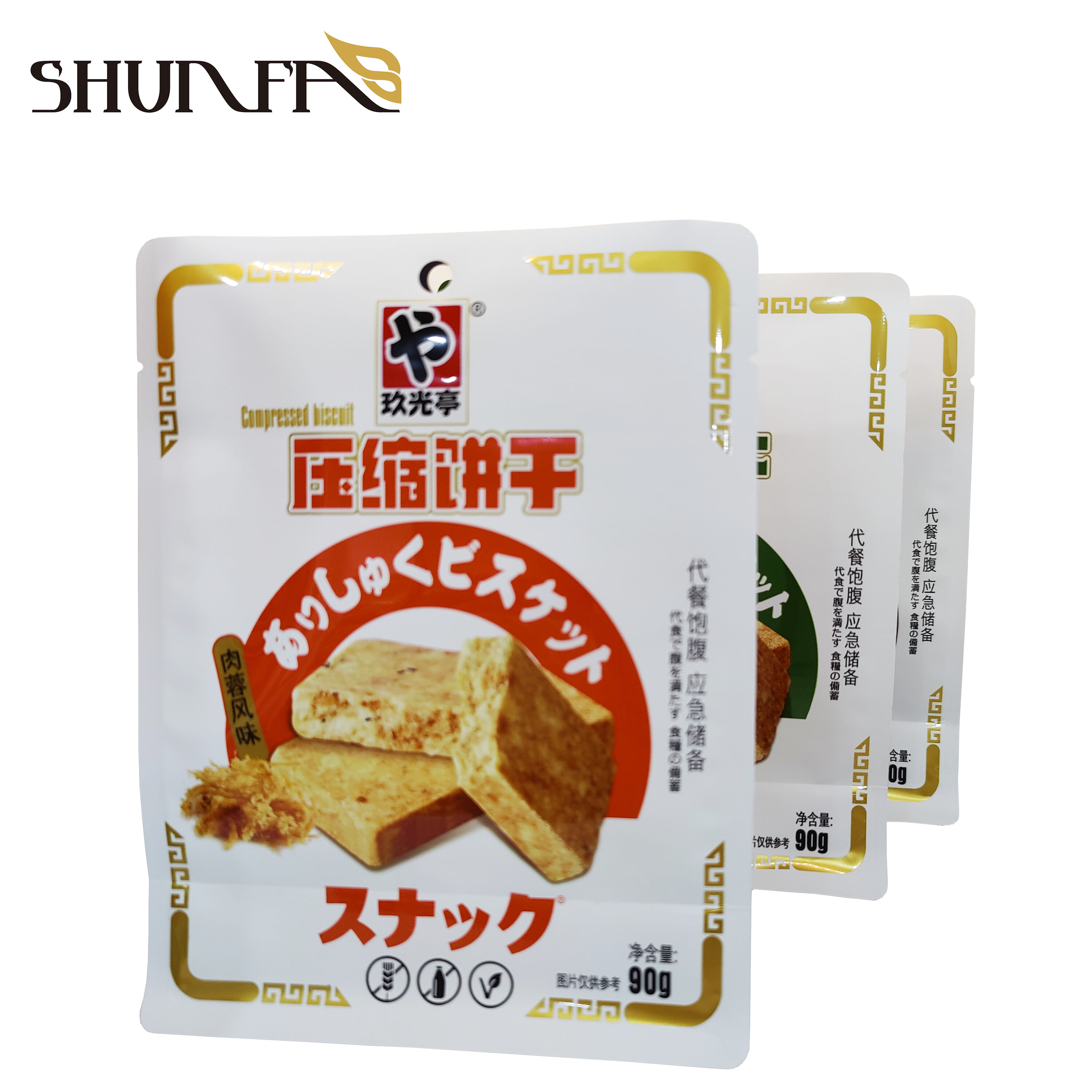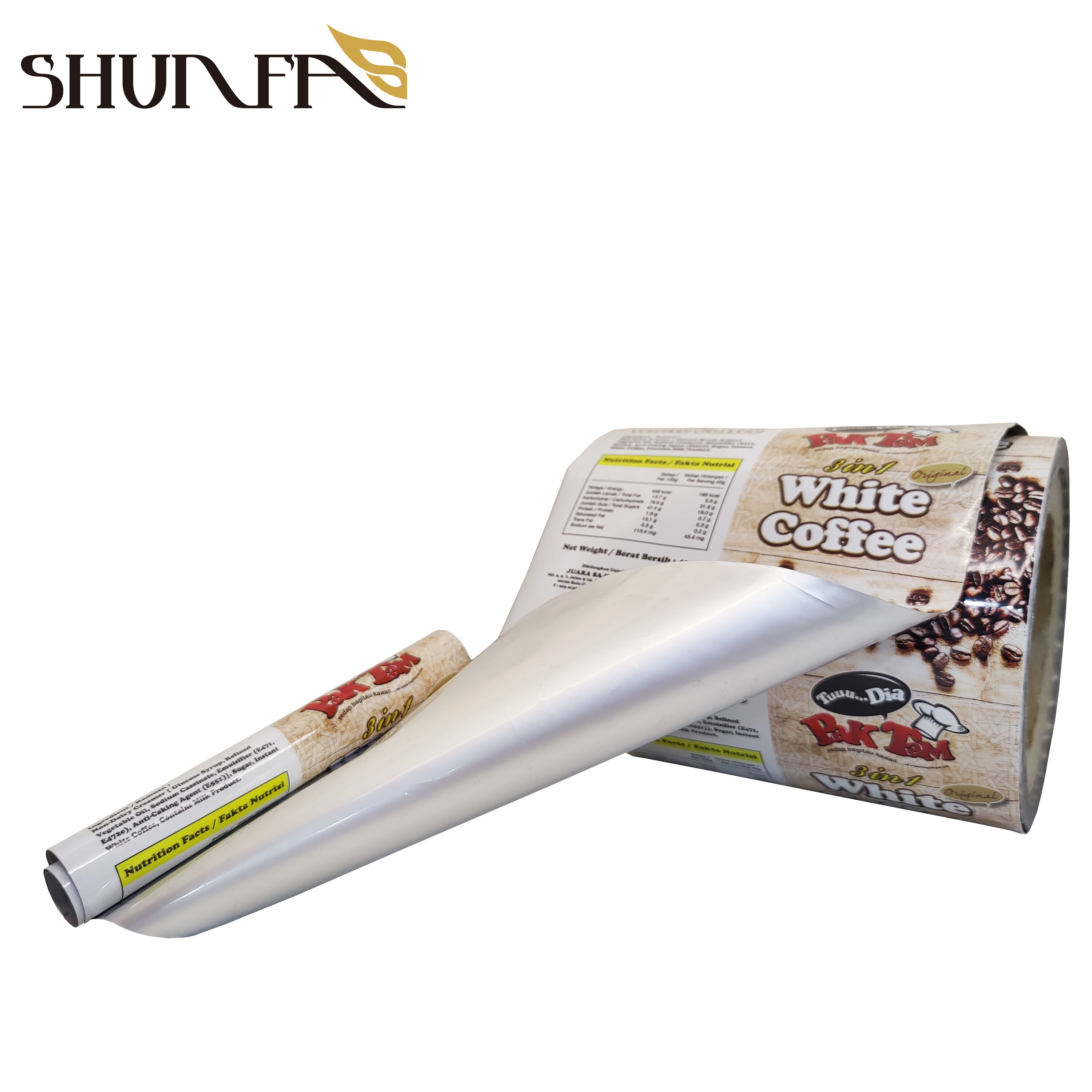Plastic film as a printing material, it is printed as a packaging bag, with light and transparent, moisture resistance and oxygen resistance, good air tightness, toughness and folding resistance, smooth surface, can protect the product, and can reproduce the shape of the product, color and other advantages. With the development of petrochemical industry, more and more varieties of plastic film, commonly used plastic film polyethylene (PE), polyvinyl chloride (PVC), polystyrene (PS), polyester film (PET), polypropylene (PP), nylon (PA) and so on. In addition, there are many other kinds of plastic film, professional flexible packaging manufacturer Shunfa packing thinks that it is necessary to understand the characteristics of plastic film before custom packaging bags. Specially sorted out the characteristics of 11 kinds of plastic film under the packaging bag for your reference.
1. Polyvinyl chloride (PVC)
The advantages of PVC film and PET are similar, and the same belongs to the characteristics of transparency, breathability, acid and alkali resistance. Many early food bags are made of PVC bags. However, PVC may release carcinogens due to incomplete polymerization of some monomers in the manufacturing process, so it is not suitable for filling food-grade substances, and many have changed to PET packaging bags, marking the material symbol is No. 3.
2. Polystyrene (PS)
The water absorption of PS film is low, but its dimensional stability is better, and it can e processed by shooting die, pressing die, extrusion and thermoforming. Generally, it is divided into foaming and unfoaming two categories according to whether it has gone through the foaming process. Unfoamed PS is mainly used in building materials, toys, stationery, etc., and can also be commonly made into containers filled with fermented dairy products, etc. In recent years, it is also widely used in making disposable tableware, and the material symbol is No. 6.
3. Polypropylene (PP)
Ordinary PP film adopts blow molding, simple process and low cost, but the optical performance is slightly lower than CPP and BOPP. The biggest feature of PP is high temperature resistance (about -20 ° C ~120 ° C), and the melting point is as high as 167 ° C, which is suitable for filling soy milk, rice milk and other products that need steam disinfection. Its hardness is higher than PE, which is used to manufacture container caps, and the material symbol is No. 5. Generally speaking, PP has a higher hardness, and the surface is more shiny, and does not produce a pungent smell when burning, while PE has a heavier candle smell.
4. Polyester Film (PET)
Polyester film (PET) is a thermoplastic engineering plastic. Thin film material made of thick sheet by extrusion method and bidirectional stretching. Polyester film is characterized by excellent mechanical properties, high rigidity, hardness and toughness, puncture resistance, friction resistance, high and low temperature resistance, chemical resistance, oil resistance, air tightness and good fragrance preservation, is one of the commonly used permeability resistance composite film substrates, but the corona resistance is poor, the price is high. The thickness of the film is generally 0.12mm, which is commonly used as the outer material of the packaging food packaging bag, and the printability is good. Mark the material symbol 1 in the plastic product.
5. Nylon (PA)
Nylon plastic film (polyamide PA) is currently industrialized production of many varieties, of which the main varieties used to produce film are nylon 6, nylon 12, nylon 66 and so on. Nylon film is a very tough film, good transparency, and has a good luster. Tensile strength, tensile strength, high and low temperature resistance, oil resistance, organic solvent resistance, wear resistance and puncture resistance are very good, and the film is relatively soft, excellent oxygen resistance, but the water vapor barrier is poor, moisture absorption, moisture permeability is large, and heat sealing is poor. Suitable for packaging hard goods, such as greasy food, fried food, vacuum packaging food, cooking food, etc.
6. High Density Polyethylene (HDPE)
HDPE film is called geomembrane or impermeable film. Its melting point is about 110℃-130℃, and its relative density is 0.918-0.965kg/cm3. Is a high crystallinity, non-polar thermoplastic resin, the original HDPE appearance is milky white, in a small cross-section of a certain degree of translucent. It has good resistance to high and low temperatures and impact resistance, even at -40F low temperatures. Its chemical stability, rigidity, toughness, mechanical strength, tear strength properties are excellent, and with the increase of density, mechanical properties, barrier properties, tensile strength and heat resistance will be improved accordingly, can resist acid, alkali, organic solvents and other corrosion. Identification: mostly opaque, feel like wax, plastic bag rubbing or rubbing when rustling.
7. Low Density Polyethylene (LDPE)
LDPE film density is low, soft, low temperature resistance, impact resistance chemical stability is good, under normal circumstances acid (except strong oxidizing acid), alkali, salt corrosion, with good electrical insulation. LDPE is mostly used in plastic bags, marking the material symbol is No. 4, and its products are mostly used in civil engineering and agricultural fields, such as geomemofilm, agricultural film (shed film, mulch film, storage film, etc.). Identification: The plastic bag made of LDPE is softer, less rustling when kneading, the outer packaging plastic film is soft and easy to tear LDPE, and the more brittle and hard is PVC or PP film.
8. Polyvinyl Alcohol (PVA)
Polyvinyl alcohol (PVA) high barrier composite film is a film with high barrier property formed by coating the modified water-soluble liquid of polyvinyl alcohol on the substrate of polyethylene plastic. Because the high barrier composite film of polyvinyl alcohol has good barrier properties and meets the requirements of environmental protection, the market prospect of this packaging material is very bright, and there is a broad market space in the food industry.
9. Casting polypropylene Film (CPP)
Casting polypropylene film (CPP) is a kind of non-stretchable, non-oriented flat extrusion film produced by melt casting quench cooling. It is characterized by fast production speed, high yield, film transparency, gloss, barrier property, softness, thickness uniformity is good, can withstand high temperature cooking (cooking temperature above 120 ° C) and low temperature heat sealing (heat sealing temperature less than 125 ° C), the performance balance is excellent. Follow-up work such as printing, composite is convenient, widely used in textiles, food, daily necessities packaging, do the inner substrate of composite packaging, can extend the shelf life of food, increase the beauty.
10. Bidirectional polypropylene film (BOPP)
Biaxial polypropylene film (BOPP) is a transparent flexible packaging bag material developed in the 1960s, which is a special production line to mix polypropylene raw materials and functional additives, melt and mix, make sheets, and then make a film by stretching. This film not only has the advantages of low density, corrosion resistance and good heat resistance of the original PP resin, but also has good optical properties, high mechanical strength, rich raw material sources, excellent printing properties, and can be combined with paper, PET and other substrates. With high definition and gloss, excellent ink absorption and coating adhesion, high tensile strength, excellent oil barrier properties, low electrostatic characteristics.
11. Metalized film
Metalized film has the characteristics of both plastic film and metal. The role of aluminum plating on the surface of the film is to block light and prevent ultraviolet radiation, which extends the shelf life of the contents and improves the brightness of the film, replacing the aluminum foil to a certain extent, and also has cheap, beautiful and good barrier properties. Therefore, metalized film is widely used in composite packaging, mainly used in biscuits and other dry, puffed food packaging, medicine and cosmetics packaging.
Post time: Jul-19-2023




